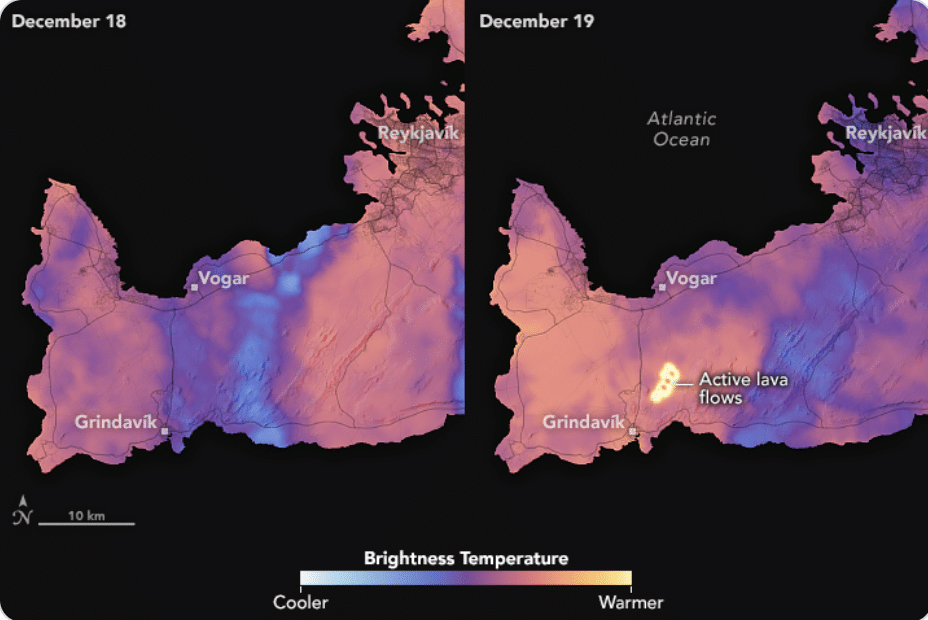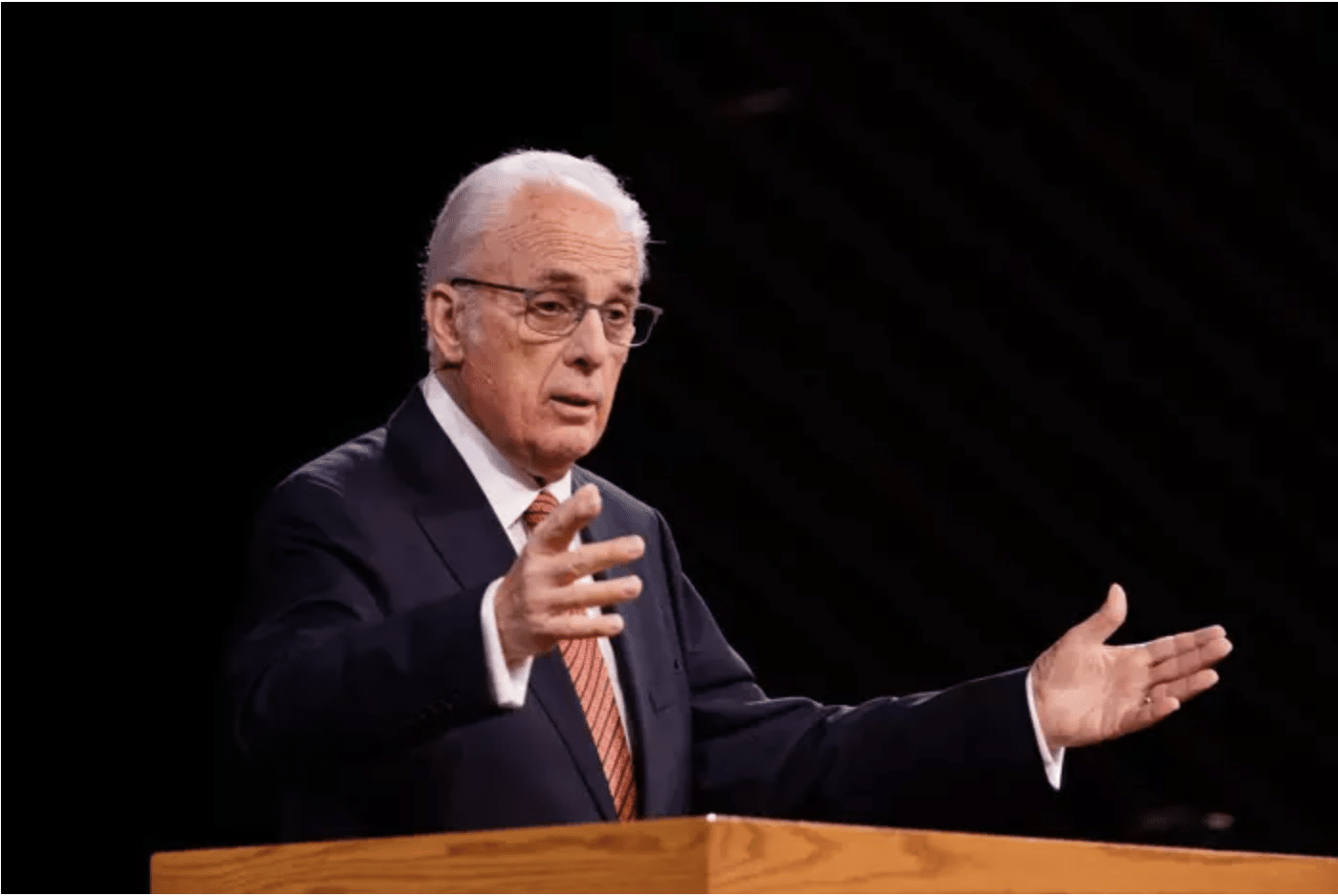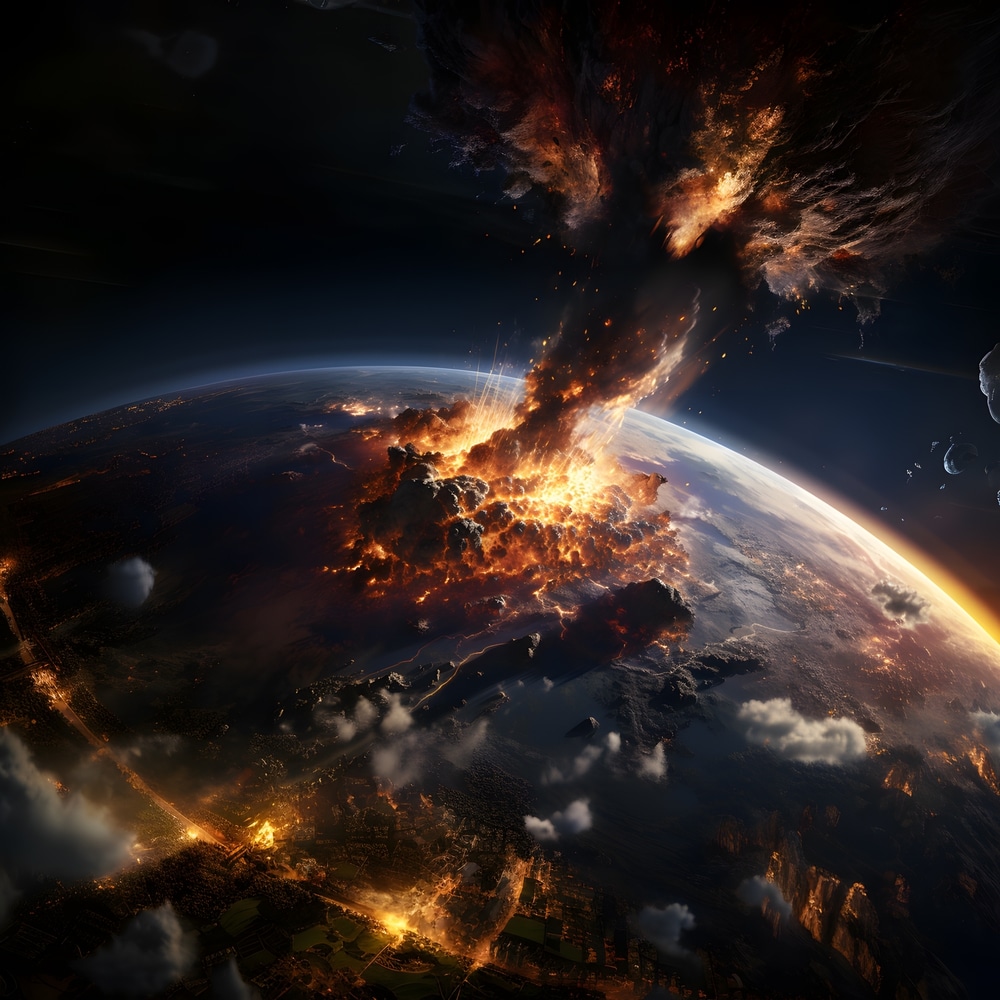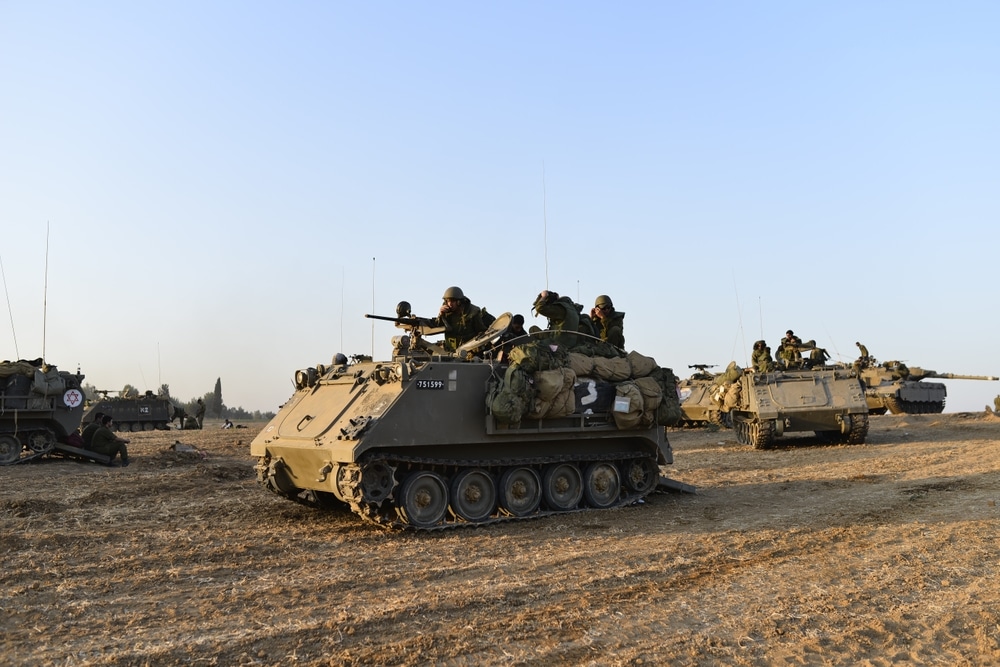On Monday, a volcanic eruption just two miles northeast of a town in Iceland opened up a cavernous fissure in the Earth, spewing lava dozens of feet into the air in what looks like a scene straight out of hell.
The eruption comes nearly a month after the town, Grandavik, was evacuated as mounting volcanic activity battered the region with earthquakes, leaving cracks in the Earth’s surface.
Now, images shared by NASA Earth Observatory show the spectacle from space using temperature readings taken before and after the eruption on December 18. The images were captured using the Visible Infrared Imaging Radiometer Suite on the NOAA-20 satellite.
“What you’re seeing in these images is the very high temperatures of the active lava flows compared to the surrounding land and clouds,” Simon Carn, a volcanologist at Michigan Technological University, told NASA Earth Observatory.
“The darker lower-temperature areas appear to be some topography that the lava is flowing around, but these could also be areas where the eruption fissure is not active and has cooler lava, or where gas plumes or clouds are obscuring the surface.”
Ground-based and aerial footage of the eruption’s aftermath paint an apocalyptic scene. A virtual wall of lava was formed from the hot material continuously shooting out of the fissure, reaching as high as 330 feet, Reuters reports.
The fissure is estimated to be around 2.5 miles long. Despite initial fears that the eruption had occurred in what could have been an especially disastrous location, the Icelandic Met Office is now forecasting a more optimistic outcome.
This type of eruption was fortunate because it doesn’t release nearly as much ash into the air. And though the lava could continue to flow for weeks or even months, it’s thankfully heading away from Grindavik.
“However, this could change if the lava accumulates and starts flowing in different directions, if the active fissure extends southward, or if new fissures open up,” Carn cautioned. “If lava continues to flow north, it could eventually reach the key main road from Keflavík airport to Reykjavík,” the nation’s capital about 30 miles away.


















